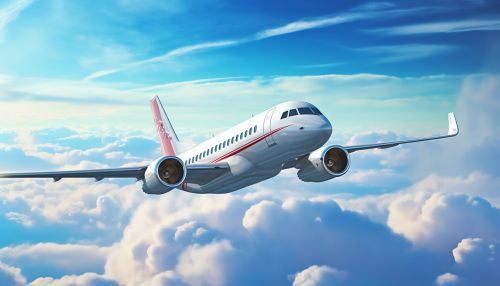Aerospace Engineering
Overview
Aerospace engineering is a specialized branch of engineering that involves the design, development, testing and production of aircraft and spacecraft. It is divided into two major overlapping branches: aeronautical engineering and astronautical engineering. The former deals with craft that stay within Earth's atmosphere, while the latter deals with craft that operate outside of Earth's atmosphere.
History
The history of aerospace engineering can be traced back to the pioneering days of early flight with the Wright brothers and the race to the moon. The field has since evolved to include not only the design and development of aircraft and spacecraft, but also the technical aspects of aviation and space exploration.
Aeronautical Engineering
Aeronautical engineering is focused on the design and construction of aircraft, including airplanes, helicopters, and drones. This branch of aerospace engineering deals with the principles of aerodynamics, which is the study of how air moves around solid objects. Aeronautical engineers also work on improving the efficiency of aircraft and reducing their environmental impact.


Astronautical Engineering
Astronautical engineering, on the other hand, is concerned with the design and development of spacecraft. This includes not only spacecraft that are intended for human spaceflight, but also unmanned spacecraft, such as satellites and probes. Astronautical engineers work on the design of spacecraft propulsion systems, the development of communication systems for long distance space travel, and the design of instruments for scientific research in space.
Principles of Aerospace Engineering
Aerospace engineering incorporates a wide range of knowledge from different fields of study. These include physics, mathematics, and materials science. The principles of aerospace engineering are applied to the design, development, and testing of both aircraft and spacecraft.
Aerospace Materials
Aerospace materials are materials that are used in the construction of aircraft and spacecraft. These materials must be lightweight, strong, and resistant to the harsh conditions of flight and space travel. Commonly used aerospace materials include aluminum, titanium, and composite materials.
Aerospace Propulsion
Aerospace propulsion is the principle of how aircraft and spacecraft move. This involves the study of engines and propulsion systems, including jet engines for aircraft and rocket engines for spacecraft. Aerospace engineers work on improving the efficiency and performance of these propulsion systems.
Aerospace Structures
Aerospace structures are the physical components of aircraft and spacecraft. This includes the fuselage, wings, and control surfaces of an aircraft, as well as the frame and shell of a spacecraft. Aerospace engineers work on the design and construction of these structures, ensuring they are strong enough to withstand the stresses of flight and space travel.
Aerospace Systems
Aerospace systems are the various systems that are used in the operation of aircraft and spacecraft. These include navigation systems, communication systems, and control systems. Aerospace engineers work on the design and development of these systems, ensuring they function correctly and efficiently.
Aerospace Research and Development
Aerospace research and development involves the study of new technologies and methods for use in aerospace engineering. This includes the development of new materials, propulsion systems, and aerospace systems. Aerospace engineers often work in research and development, pushing the boundaries of what is possible in aerospace engineering.
Careers in Aerospace Engineering
Careers in aerospace engineering are varied and rewarding. Aerospace engineers work in a variety of settings, including government agencies, private corporations, and universities. They may work on the design and development of new aircraft and spacecraft, conduct research into new aerospace technologies, or work on the maintenance and improvement of existing aircraft and spacecraft.
